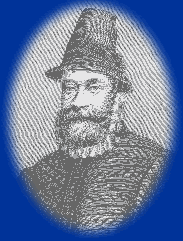|
THE
HISTORY OF LEITH |
|
|
|
|
|
Going down Henderson Street from Great Junction Street and going towards the Shore. You will see on the left hand side opposite the Vaults Parliament Street. Have you ever wondered how it managed to get its name. Just over a hundred years ago in 1887 stood a very fine old house in the style of the Renaissance, which on the Gables showed the thistle and rose. This house was of great historical importance because this was the council Chamber of the Regents of Scotland Morton, Lennox and Mar and it was from here a brutal Civil War was controlled. In 1568 Mary, Queen of Scots escaped from Lochleven Castle and went west to raise a loyal army against the forces of Lennox-Stewart (Stewart was marys half brother) protectors of the young James VI. Her forces were defeated at Langside and she fled to England entering at Workington. In her place a regent was appointed and this was the earl of Moray however he couldn’t form a stable protestant power base and eventually he was assassinated in 1570. The country was split between the supporters of Queen Mary and her son James VI. Lennox was then appointed as regent, he was the father of Darnley (father of Queen marys husband). He was also assassinated after 14 months and was succeeded by the earl of Mar, and the earl of Morton replaced him, Morton was ruthless to the core and nothing like the earlier regents. Eventually in 1573 Kirkcaldy of Grange, Maitland of Lethington, and the Lairds of Restalrig and Drylaw held Edinburgh and Edinburgh Castle for Queen Mary. Leith was held for James VI. It is at this time the old house on the Coal Hill comes into history. As this is where the brutal Civil War was planned and executed. After the death of Lennox and Mar, James earl of Morton became regent in name as he had been in fact. Morton was cruel and callous and fought against Kirkcaldy with the utmost cruelty. The cry of the Kings Men was No quarter” and all prisoners, which fell into their hands, were hanged in full view of the Castle at the Gallow Lee, which was just up the road from Pilrig on Leith Walk. Remember there is no worse war then a civil war and the Queens Men responded in kind hanging their prisoners from the battlements of Edinburgh Castle or at Moutree’s Hill where Register House now stands. Slaughter was happening every day and trade collapsed and hard times spread hunger into Leith and Edinburgh. On what was to become Easter Road and Leith Walk daily battles took place and corpses were everywhere. Everywhere the air was full of the stench of death. However just as at the Siege of Leith the impasse was broken by the intervention of the English. Queen Elizabeth sent cannon and an army under Sir William Drury to Leith from Berwick (as she wanted the protestant cause to succeed) and encamped on Leith Links and Bernard Street in an area called Little London. What Morton failed to do, English guns and treachery succeeded in doing was to take Edinburgh Castle. In May 1573 Edinburgh Castle fell, many of its towers destroyed in the bombardment. Kirkcaldy and Lethington surrendered to Sir William drury. Lethington died in the Leith Tolbooth either by his own hand or was murdered whatever was the case when the cell door was opened his body was found being eaten by rats. Kirkcaldy was hanged, and David Lindsay minister of South Leith Church was with him to the very last. Even Sir William Drury was disgusted at the treatment of Kirkcaldy and later resigned his command. The Laird of Restalrig although condemned was later pardoned and set free. However James Mossman Queen Mary’s Goldsmith was hanged on the same scaffold with Kirkcaldy. His coat of arms can still be seen on John Knox House in the High St. Which despite it’s name had nothing to do with John Knox. The Mossman family were Goldsmith for many generations after the death of James Mossman. |
|
|
|
|
